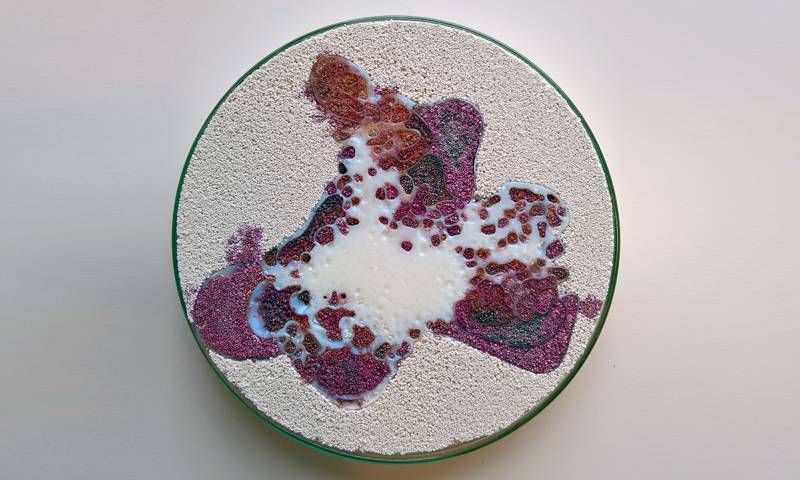PhD Research Conversations: Paul Bavister | Richard Beckett
02 May 2017, 4:00 pm–7:00 pm

Join current Bartlett School of Architecture PhD candidates as they present their work in progress.
Event Information
Open to
- All
Organiser
-
The Bartlett School of Architecture
Location
-
Room 6.02, 22 Gordon Street, London WC1H 0QB
Upgrades
Paul Bavister – Evolutionary auditory environments
First and second supervisors: Stephen Gage, Penelope Haralambidou
Richard Beckett – Bioaugmented Design
First and second supervisors: Marcos Cruz, Mark Miodownik
Paul Bavister
Evolutionary auditory environments
Abstract
The design of spaces for listening has historically been a symbiotic process. For thousands of years, built architecture and musical repertoire have informed each other, leading to constantly evolving developments in architectural design, the development of musical instruments and musical composition.
This reciprocal process was consolidated and largely halted by a number of factors; the development of ‘precedent musical spaces’ in the 1940’s; the ‘chamber hall’, the symphony hall’ etc. and technological advances in music production and propagation, which commenced with the development of radio and the phonograph, where ‘space’ was synthetically added to recordings via electronic reverberation, effectively severing the relationship between music and architecture.
This thesis will investigate whether it is possible to re-link sound and space to give rise to new spatial and musical forms. It will document a novel series of studies by the author on the interfaces between sound / space and the body, using virtual acoustic spaces, bio-sensing, generative systems and other tools available to architects, performers and acousticians.
In a test already undertaken, a series of synthetic sounds are evolved to fit digital representations of differing spaces that are recognized as having distinct, but differing acoustic properties. Listeners are presented with a series of sounds inside a virtual environment, which are either accepted as successful, or rejected as unsuccessful using subconscious inputs from the listener. Sounds that generated a heightened emotional response were deemed to be successful. A ‘successful’ sound then goes on to seed the next generation of sounds using a recursive evolutionary process. After a fixed series of iterations, the sound(s) that evolved can be considered as a good match between sound space and listener. This iterative process can be seen to be analogous to the ‘chance’ reciprocation of sound and space that has occurred naturally over the last millennia.
The thesis will conclude with proposals for series of novel spaces linked to novel soundscapes; integrating new approaches to compositional thinking with architectural and acoustic design.
Image: Audio spectrogram of a single FFM tone in anechoic space. Source: The Author

Richard Beckett
Bioaugmented Design
Abstract
A fundamental shift within the medical field is now occurring based on a newly acquired understanding of the beneficial role that microbes play in the body. The hygiene hypothesis and old friend’s theory describe how normal immune function is dependent on exposure to a rich microbial diversity especially during the early years of life, and we are now approaching the ability to cultivate benign microbes in the body. By analogy, microbes can have similar, beneficial roles to play within buildings yet a similar shift in architecture has not occurred.
Current building design is still driven by environmental approaches based on a cultural fear of microbes and a modernist preference for pseudo sterility. The acceptance of germ theory in the early part of the 20th century and an obsession for cleanliness led to design strategies to prevent any presence of microbes from our indoor environments. The later shift towards “mechanised hygiene” and well-tempered environments have led to urban environments today that exhibit significantly lower microbial diversity than that found in rural environments and is in part related to the increased occurrence of autoimmune related illness observed in developed cities.
This research aims to contribute to a necessary body of work to find or invent niches in buildings where healthful microbial metabolism might occur and/or might be cultivated. It explores the notion of a probiotic architecture, buildings inoculated with and growing beneficial microorganisms; essentially to create living walls, ceilings, floors, furniture and components that can contribute to the health and healthfulness of buildings.
The work will explore, through design, how building materials themselves can become a store and source of diverse beneficial microbial communities available for transfer between buildings and occupants. By using principles of bioreceptivity, materials will be designed with the preferred physical and chemical properties to support and proliferate the growth of benign microbial communities and tested in order to determine potential niches for microbial cultivation in buildings.
Image: bacillis spps. on concrete scaffold
 Close
Close

